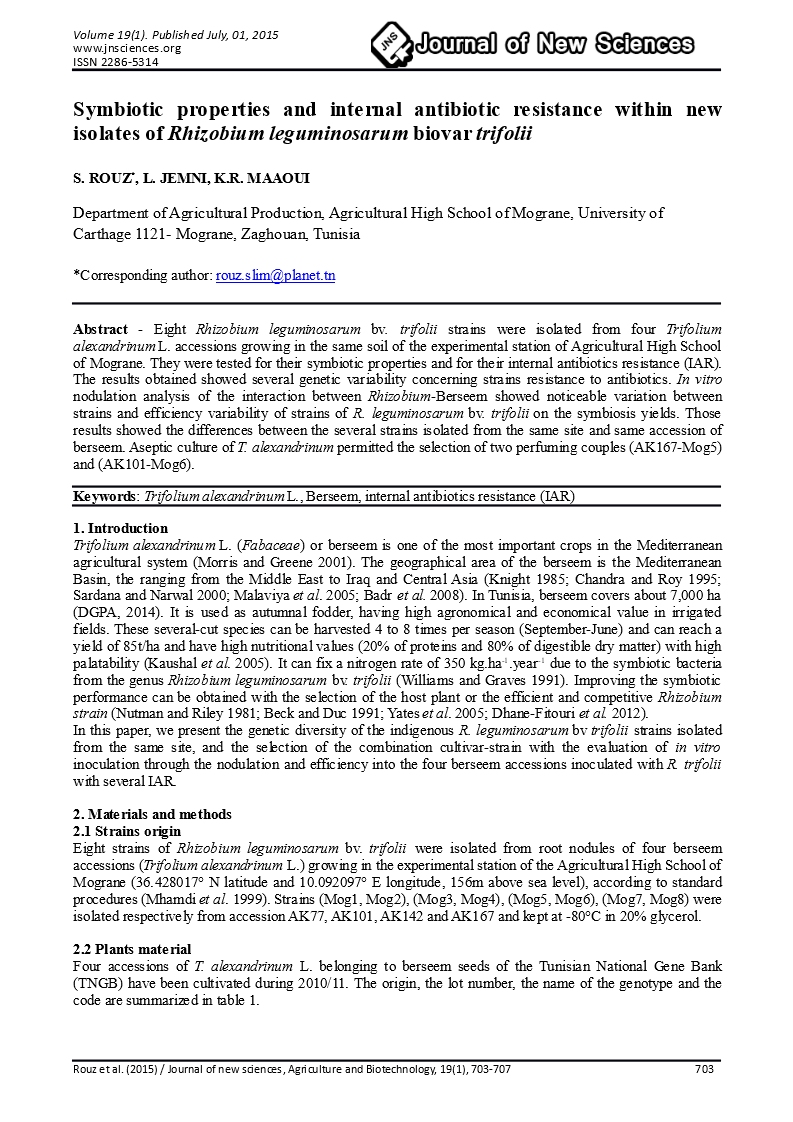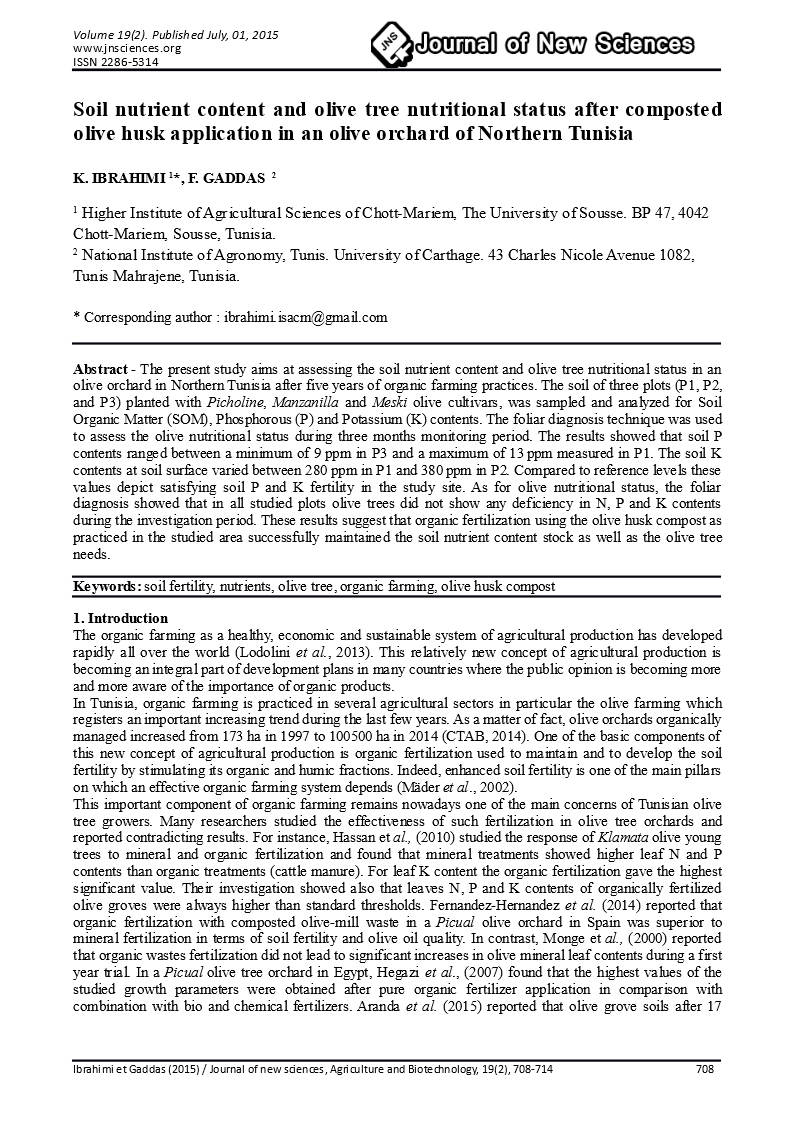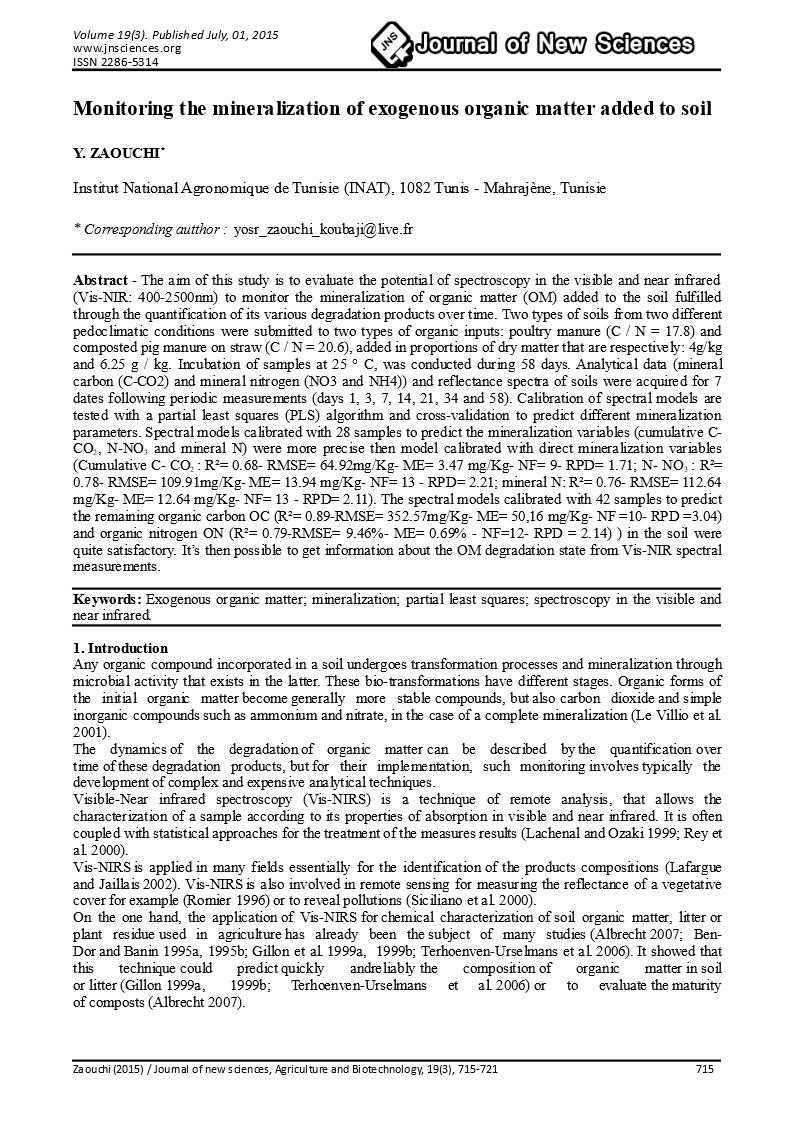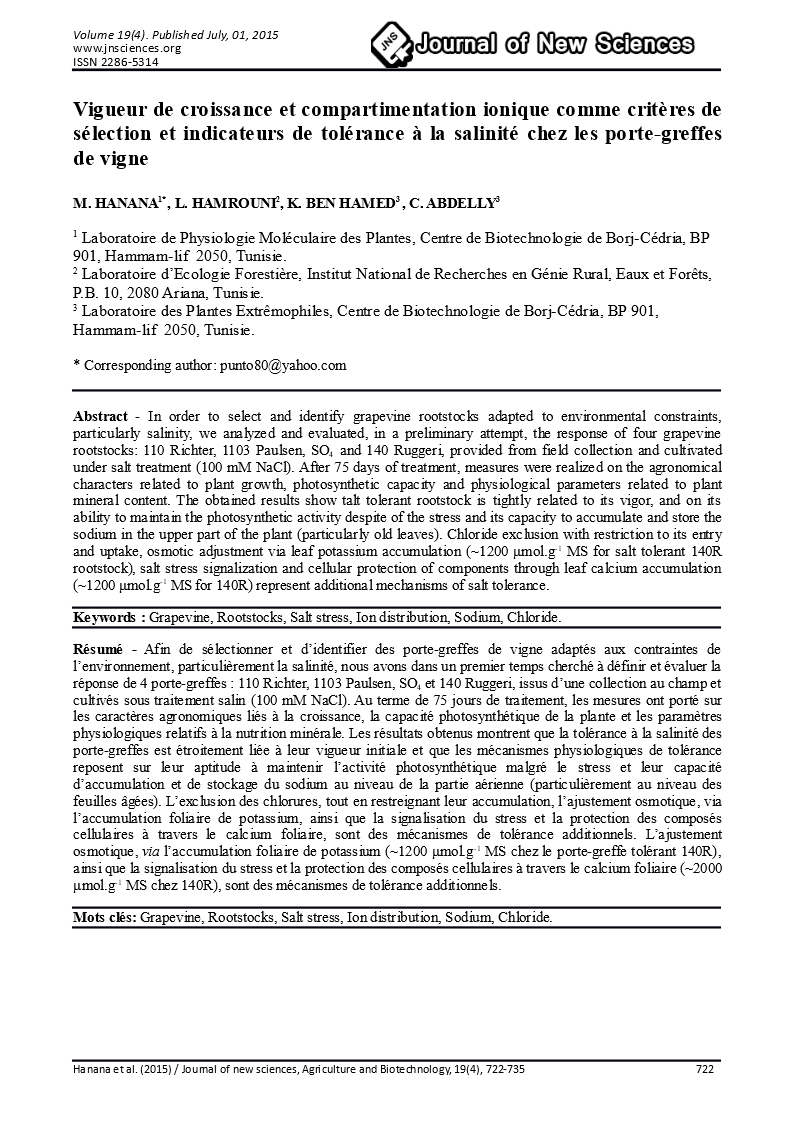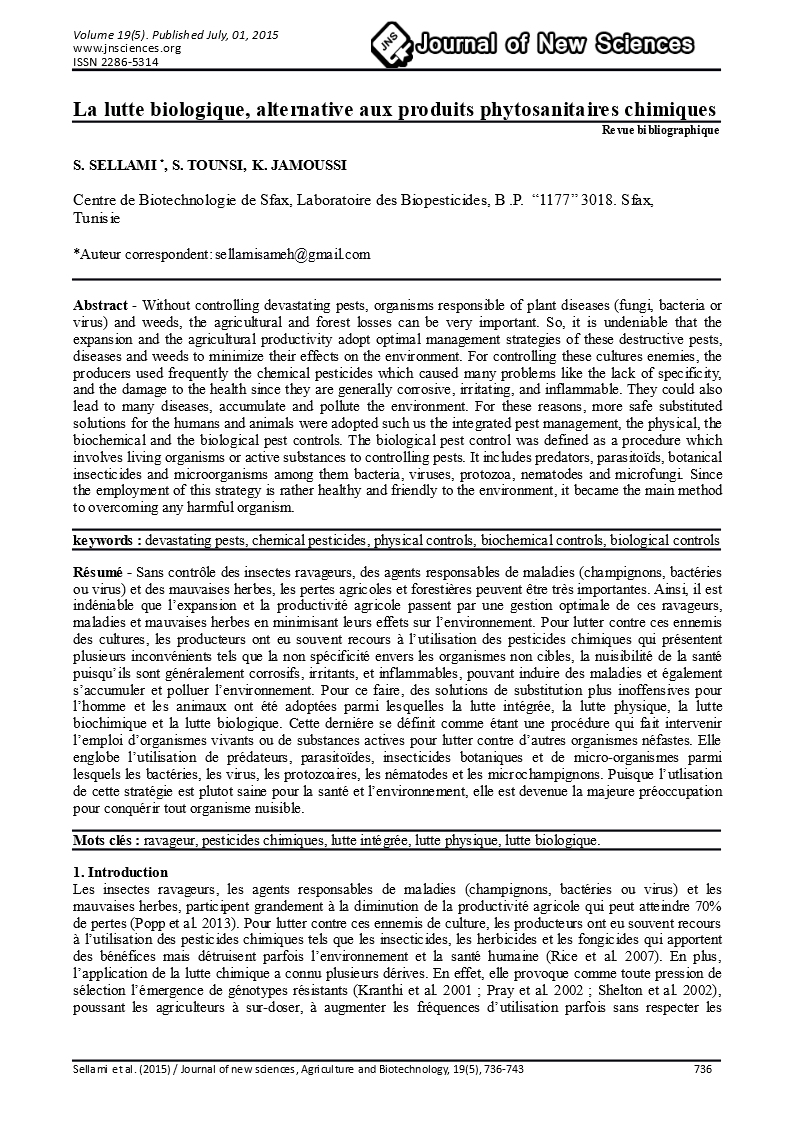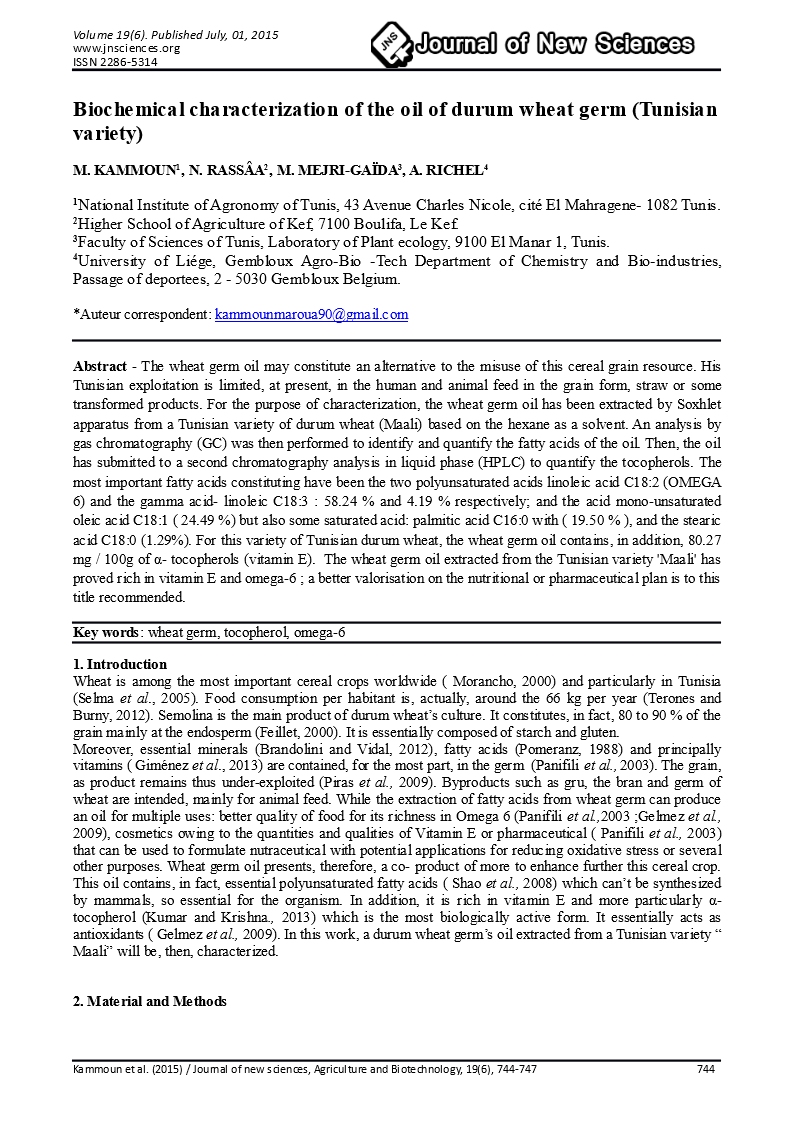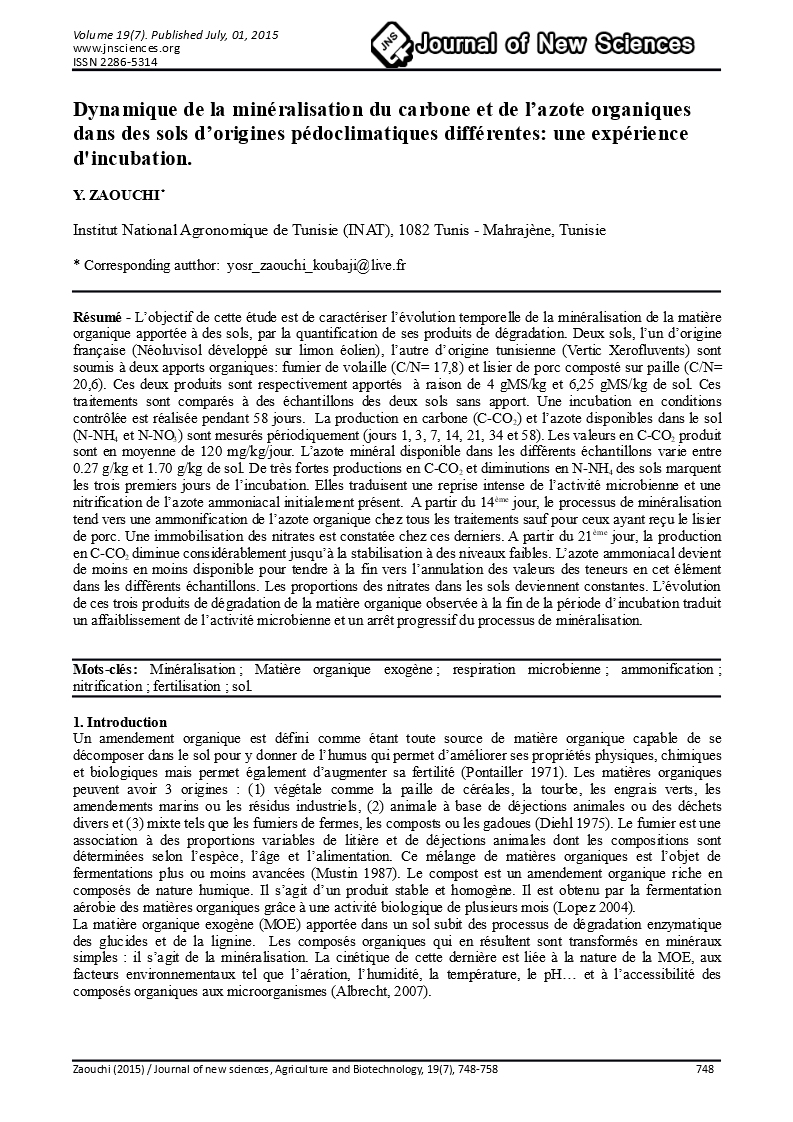M. HANANA1*
L. HAMROUNI2
K. BEN HAMED3
C. ABDELLY3
1 Laboratoire de Physiologie Moléculaire des Plantes, Centre de Biotechnologie de Borj-Cédria, BP 901, Hammam-lif 2050, Tunisie.
2 Laboratoire d’Ecologie Forestière, Institut National de Recherches en Génie Rural, Eaux et Forêts, P.B. 10, 2080 Ariana, Tunisie.
3 Laboratoire des Plantes Extrêmophiles, Centre de Biotechnologie de Borj-Cédria, BP 901, Hammam-lif 2050, Tunisie.
Abstract - In order to select and identify grapevine rootstocks adapted to environmental constraints, particularly salinity, we analyzed and evaluated, in a preliminary attempt, the response of four grapevine rootstocks: 110 Richter, 1103 Paulsen, SO4 and 140 Ruggeri, provided from field collection and cultivated under salt treatment (100 mM NaCl). After 75 days of treatment, measures were realized on the agronomical characters related to plant growth, photosynthetic capacity and physiological parameters related to plant mineral content. The obtained results show talt tolerant rootstock is tightly related to its vigor, and on its ability to maintain the photosynthetic activity despite of the stress and its capacity to accumulate and store the sodium in the upper part of the plant (particularly old leaves). Chloride exclusion with restriction to its entry and uptake, osmotic adjustment via leaf potassium accumulation (~1200 μmol.g-1 MS for salt tolerant 140R rootstock), salt stress signalization and cellular protection of components through leaf calcium accumulation (~1200 μmol.g-1 MS for 140R) represent additional mechanisms of salt tolerance.
Keywords : Grapevine, Rootstocks, Salt stress, Ion distribution, Sodium, Chloride.
Résumé - Afin de sélectionner et d’identifier des porte-greffes de vigne adaptés aux contraintes de l’environnement, particulièrement la salinité, nous avons dans un premier temps cherché à définir et évaluer la réponse de 4 porte-greffes : 110 Richter, 1103 Paulsen, SO4 et 140 Ruggeri, issus d’une collection au champ et cultivés sous traitement salin (100 mM NaCl). Au terme de 75 jours de traitement, les mesures ont porté sur les caractères agronomiques liés à la croissance, la capacité photosynthétique de la plante et les paramètres physiologiques relatifs à la nutrition minérale. Les résultats obtenus montrent que la tolérance à la salinité des porte-greffes est étroitement liée à leur vigueur initiale et que les mécanismes physiologiques de tolérance reposent sur leur aptitude à maintenir l’activité photosynthétique malgré le stress et leur capacité d’accumulation et de stockage du sodium au niveau de la partie aérienne (particulièrement au niveau des feuilles âgées). L’exclusion des chlorures, tout en restreignant leur accumulation, l’ajustement osmotique, via l’accumulation foliaire de potassium, ainsi que la signalisation du stress et la protection des composés cellulaires à travers le calcium foliaire, sont des mécanismes de tolérance additionnels. L’ajustement osmotique, via l’accumulation foliaire de potassium (~1200 μmol.g-1 MS chez le porte-greffe tolérant 140R), ainsi que la signalisation du stress et la protection des composés cellulaires à travers le calcium foliaire (~2000 μmol.g-1 MS chez 140R), sont des mécanismes de tolérance additionnels.
Mots clés: Grapevine, Rootstocks, Salt stress, Ion distribution, Sodium, Chloride.
Read more
